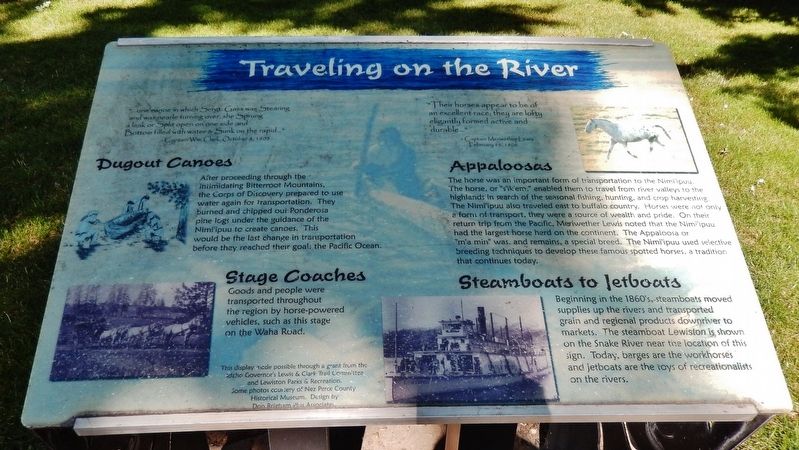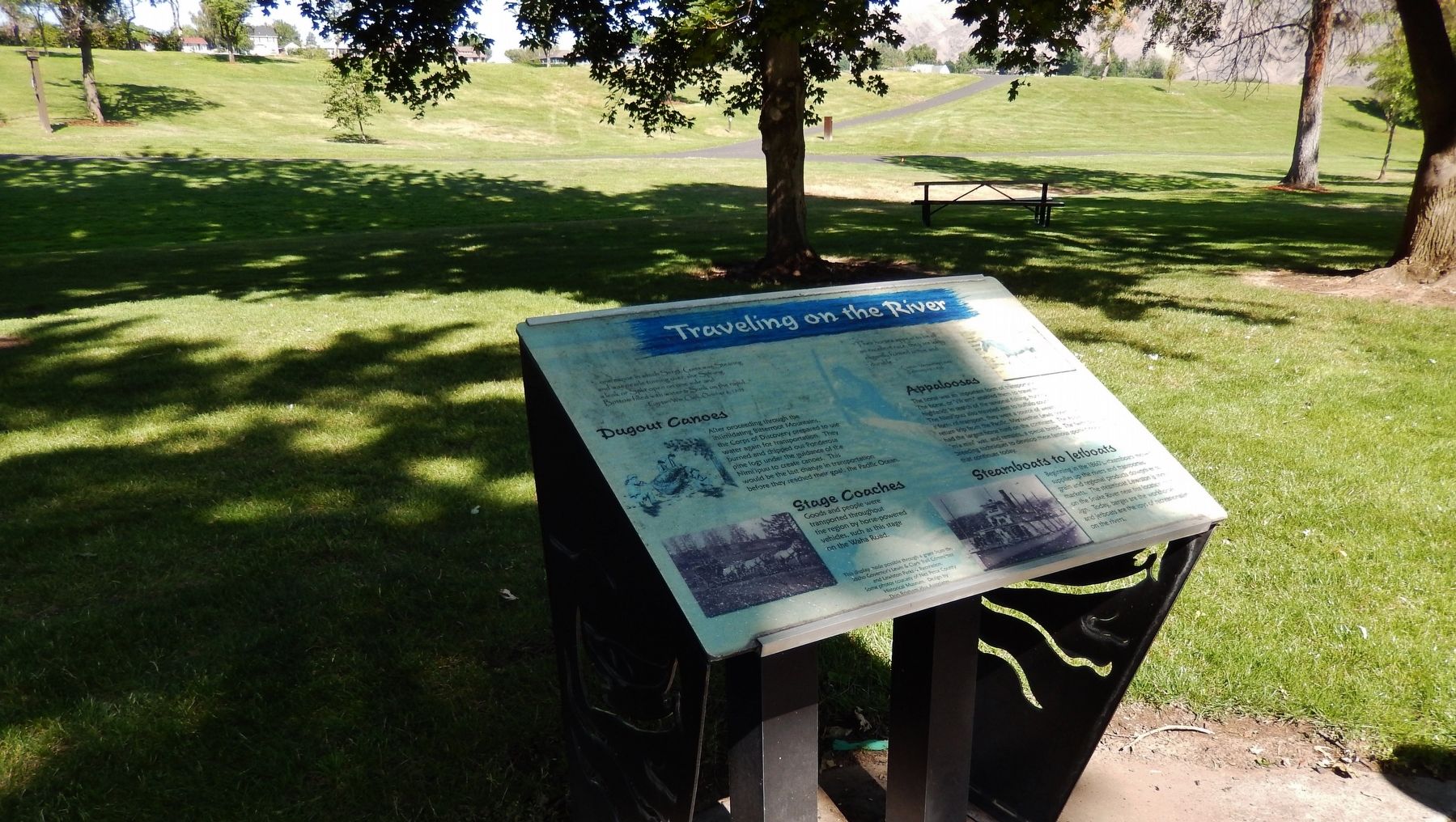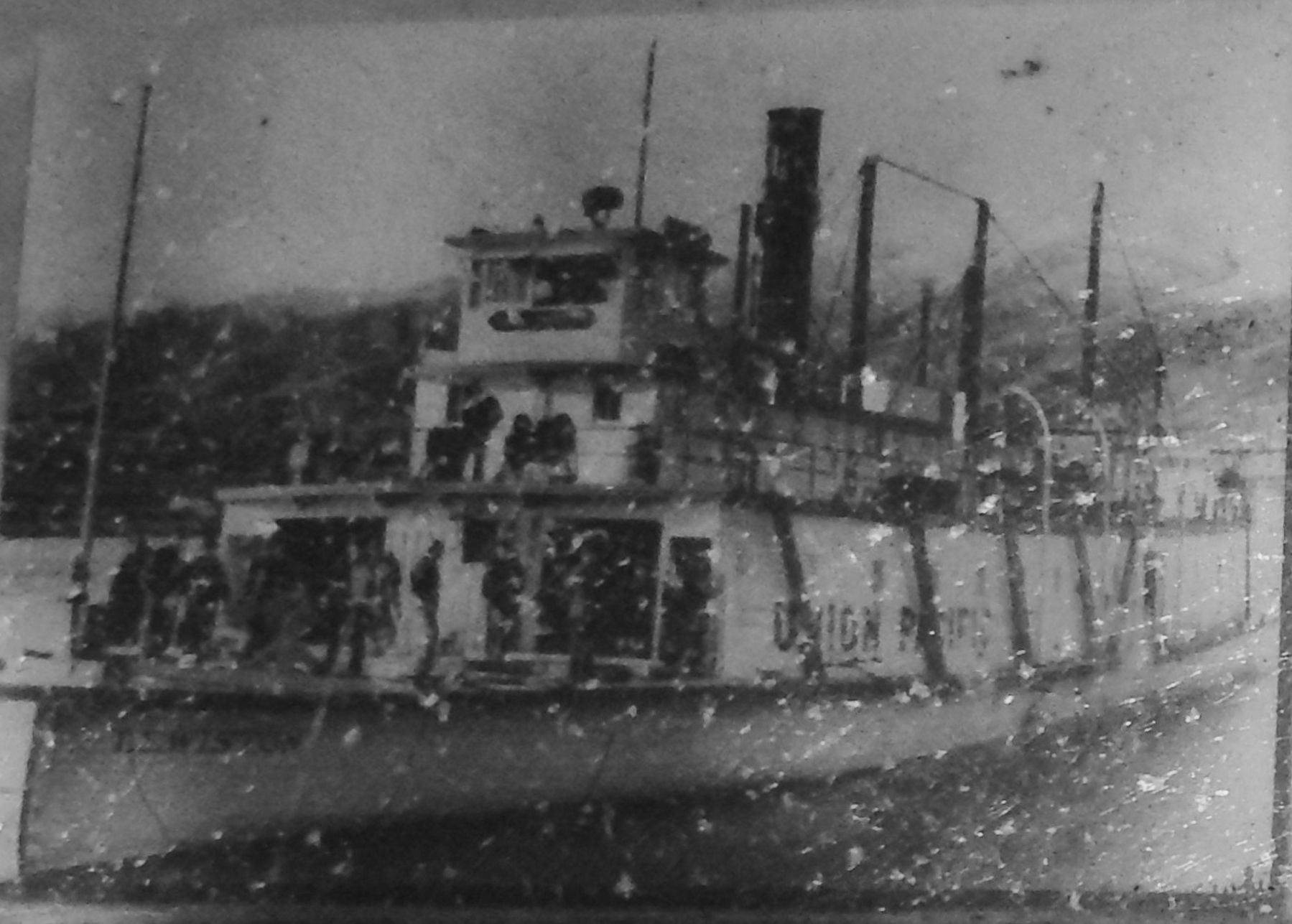Lewiston in Nez Perce County, Idaho — The American West (Mountains)
Traveling on the River
“…one canoe in which Sergt. Gass was Stearing
And was nearle turning over, she Sprung
A leak or Split open on one side and
Bottom filled with water & Sunk on the rapid…”
~Captain Wm. Clark, October 8, 1805
Dugout Canoes
After proceeding through the intimidating Bitterroot Mountains, the Corps of Discovery prepared to use water again for transportation. They burned and chipped out Ponderosa pine logs under the guidance of the Nimi’ipuu to create canoes. This would be the last change in transportation before they reached their goal: the Pacific Ocean.
Stage Coaches
Goods and people were transported throughout the region by horse-powered vehicles, such as this stage on the Waha Road.
“Their horses appear to be of an excellent race; they are lofty elegantly formed active and durable…”
~Captain Meriwether Lewis
February 15, 1806
Appaloosas
The horse was an important form of transportation to the Nimi’ipuu. The horse, or “s’ik’em,” enabled them to travel from river valleys to the highlands in search of the seasonal fishing, hunting, and crop harvesting. The Nimi’ipuu also traveled east to buffalo country. Horses were not only a form of transport, they were a source of wealth and pride. On their return trip from the Pacific, Meriwether Lewis noted that the Nimi’ipuu ”m’a min” was, and remains, a special breed. The Nimi’ipuu used selective breeding techniques to develop these famous spotted horses, a tradition that continues today.
Steamboats to Jetboats
Beginning in the 1860’s, steamboats moved supplies up the rivers and transported grain and regional products downriver to markets. The steamboat Lewiston is shown on the Snake River near the location of this sign. Today, barges are the workhorses and jetboats are the toys of recreationalists on the rivers.
Erected by Idaho Governor's Lewis & Clark Trail Committee, Lewiston Parks & Recreation.
Topics and series. This historical marker is listed in these topic lists: Exploration • Industry & Commerce • Native Americans • Waterways & Vessels. In addition, it is included in the Lewis & Clark Expedition series list.
Location. 46° 24.729′ N, 117° 1.995′ W. Marker is in Lewiston, Idaho, in Nez Perce County. Marker is on Snake River Avenue, 0.3 miles south of U.S. 12, on the right when traveling south. Marker is located along the walking trail in Lewiston's Kiwanis Park. Touch for map. Marker is in this post office area: Lewiston ID 83501, United States of America. Touch for directions.
Other nearby markers. At least 8 other markers are within walking distance of this marker. Writings on the River (here, next to this marker); Fishing in the River (a few steps from this marker); Exploring on the River (within shouting distance of this marker); Dwellings by the River (within shouting distance of this marker); A Confluence of Rivers & Steam (approx. 0.3 miles away); A Man and His Island Dream (approx. 0.3 miles away); Kettenbach Building (approx. 0.7 miles away); Firsts in Lewiston (approx. 0.7 miles away). Touch for a list and map of all markers in Lewiston.
Also see . . . Nez Perce horse breeding program.
In 1994 the Nez Perce tribe began a breeding program, based on crossbreeding the Appaloosa and a Central Asian breed called Akhal-Teke, to produce what they called the Nez Perce Horse. They wanted to restore part of their traditional horse culture, where they had conducted selective breeding of their horses, long considered a marker of wealth and status, and trained their members in a high quality of horsemanship. Social disruption due to reservation life and assimilationist pressures by Americans and the government resulted in the destruction of their horse culture in the 19th century. (Submitted on November 27, 2017, by Cosmos Mariner of Cape Canaveral, Florida.)
Credits. This page was last revised on November 29, 2017. It was originally submitted on November 26, 2017, by Cosmos Mariner of Cape Canaveral, Florida. This page has been viewed 182 times since then and 16 times this year. Photos: 1, 2, 3. submitted on November 26, 2017, by Cosmos Mariner of Cape Canaveral, Florida. • Bill Pfingsten was the editor who published this page.


